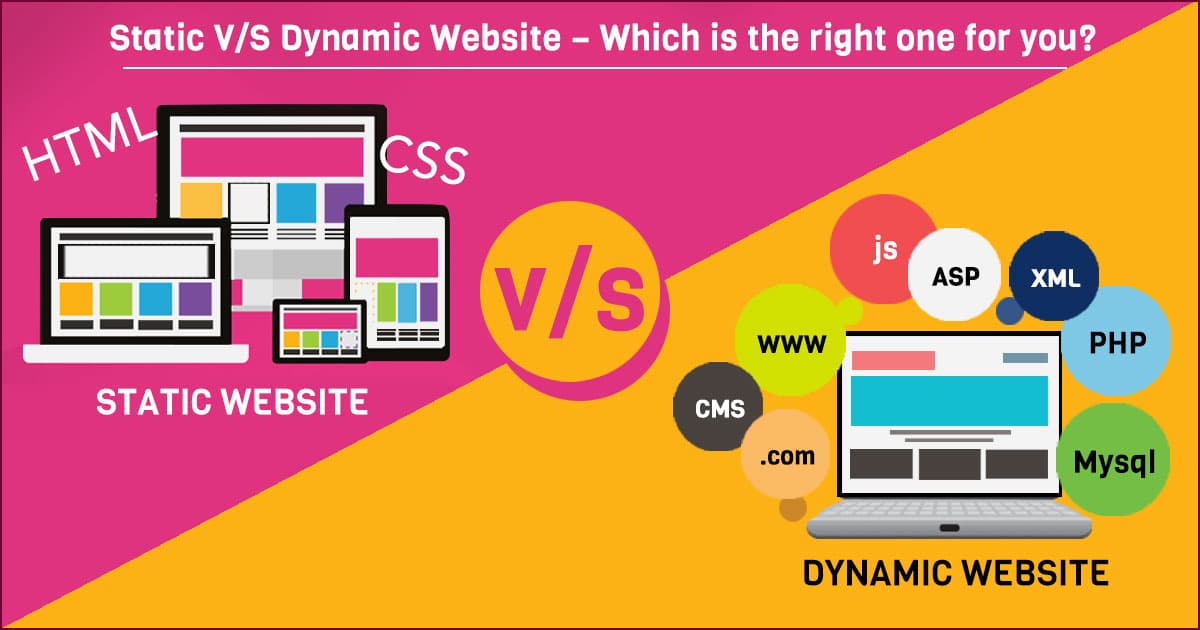Static vs. Dynamic Websites: Which One Do You Need?

Your website isn’t just a collection of pages; it’s the face of your business in the digital realm. With every click, your site either draws users in or sends them elsewhere. One of the most important decisions when building a website is choosing between a static or a dynamic design.
Both options have distinct strengths and cater to different needs. Understanding their differences can save you time, money, and headaches while ensuring your site perfectly aligns with your business goals. Let’s explore what sets these two types of websites apart and uncover which one suits your needs best.
Static Websites: Simple, Fast, and Reliable
Imagine a digital brochure that remains unchanged unless you update it manually. That’s essentially what a static website is. Built using basic coding languages like HTML and CSS, these websites deliver the same content to every visitor.
Static websites are the ideal solution for businesses or individuals who need a straightforward and cost-effective online presence. With their simplicity comes incredible speed and reliability.
Why Choose a Static Website?
- Blazing-Fast Performance
With no need for server-side processing, static websites load almost instantly. This ensures a seamless experience, even for users with slower internet connections. - Lower Costs
Building and maintaining a static website is often more affordable, making it a smart choice for startups or small businesses. - Rock-Solid Security
Without databases or complex back-end systems, static websites are far less vulnerable to cyberattacks. - Simplicity in Hosting
Static websites require minimal resources, so they’re compatible with nearly any hosting service, keeping costs low and deployment hassle-free.
However, static websites have limitations. If your business requires frequent updates or interactive features, you’ll need to revisit the code manually or consider a more dynamic approach.
Dynamic Websites: Interactive and Adaptable
Now imagine a website that greets visitors by name, updates content in real time, and adapts to each user’s preferences. That’s the power of a dynamic website. Unlike their static counterparts, dynamic websites rely on server-side scripting and technologies like PHP, Python, or a CMS (Content Management System) to generate content on demand.
Dynamic websites are perfect for businesses that thrive on constant updates or need to offer personalized experiences to their audience.
Why Choose a Dynamic Website?
- Personalized User Experiences
Dynamic websites can tailor content to individual users, offering a more engaging and relevant experience. - Effortless Content Updates
With a CMS like WordPress or Drupal, updating content is as easy as writing an email—no coding required. - Scalability
A dynamic website grows with your business. From adding e-commerce functionality to user accounts, it offers unparalleled flexibility. - Rich Interactivity
Features like forms, chatbots, and multimedia galleries make dynamic websites the go-to option for engaging and retaining users.
While dynamic websites bring versatility, they also come with a steeper price tag and require more robust hosting and maintenance.
Key Differences Between Static and Dynamic Websites
The choice between static and dynamic boils down to how you want your website to function. Static websites are simple, secure, and fast, perfect for businesses that need a reliable online presence without regular updates. In contrast, dynamic websites offer interactivity and scalability, making them ideal for brands that rely on frequent updates or personalized content.
Here’s how to decide:
- Opt for a static website if you’re looking for a fast, affordable, and secure solution for showcasing fixed information, such as a portfolio, a brochure site, or a small business website.
- Choose a dynamic website if your business demands frequent updates, user interaction, or features like e-commerce, blogs, or memberships.
Trends to Watch in 2025
The future of website development is bridging the gap between static and dynamic websites. Emerging technologies like static site generators (e.g., Gatsby, Hugo) and headless CMS platforms are making it possible to create hybrid websites that combine the speed of static sites with the flexibility of dynamic functionality.
Additionally, the rise of AI-driven personalization will redefine dynamic websites, offering even more tailored user experiences while maintaining optimal performance.
Making the Right Choice for Your Business
Your website is more than just a digital asset; it’s a tool for building trust, driving engagement, and achieving your goals. Whether you opt for the simplicity and speed of a static website or the interactivity and scalability of a dynamic one, your choice should reflect your business’s current needs and future ambitions.
A static website might be the perfect fit if your focus is on a low-maintenance, cost-effective, and secure solution. On the other hand, if you’re aiming for an engaging, feature-rich experience that evolves with your business, a dynamic website is the way to go.
So, ask yourself: Do you need a simple, stable platform or an adaptable, interactive experience? Whatever your answer, the right website will set the foundation for your digital success in 2025 and beyond.





